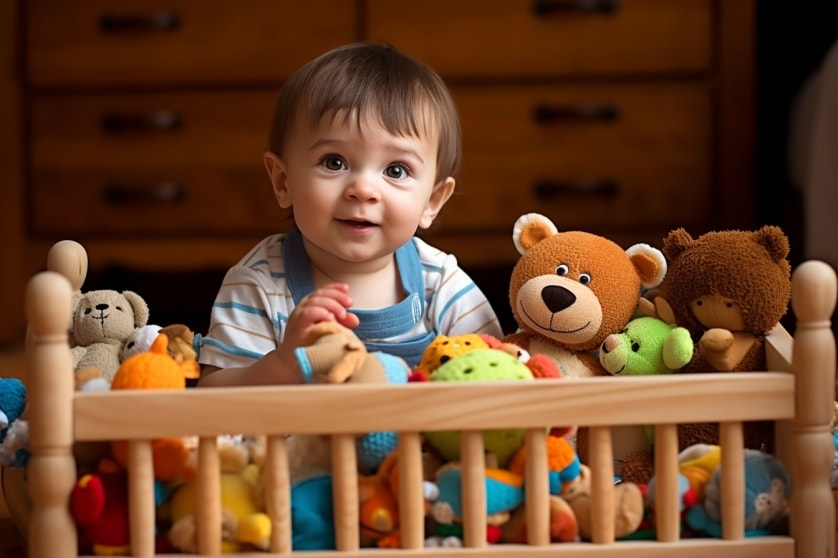Table of Contents
ToggleCommon Health Concerns in Babies: How to Recognize and Address Them
As a new parent, the health and well-being of your baby is likely your top priority. However, it’s not uncommon for babies to experience health concerns that can be challenging for new parents to manage. From the common cold and flu to skin rashes and allergies, there are a variety of health concerns that can impact your baby’s health and happiness.
That’s why in this article, we will discuss the most common health concerns in babies and how to recognize and address them. We will provide you with the information you need to keep your baby healthy and happy, including tips on preventing and managing common health concerns.
- Learn how to recognize the symptoms of the common cold and flu in babies, and when to seek medical attention.
- Understand the causes of diarrhea and vomiting in babies, and how to prevent dehydration.
- Discover the most common skin rashes and allergies in babies, and how to alleviate the symptoms.
- Get tips on managing fever in babies, including when to use fever-reducing medications and when to seek medical attention.
- Learn about colic in babies, including the causes and how to alleviate the symptoms.
By the end of this article, you’ll have a better understanding of the most common health concerns in babies, and how to address them. Whether you’re a new parent or a seasoned pro, the information in this article will help you keep your baby healthy and happy.
So let’s dive in and explore the world of baby health together!

1. Common Cold and Flu Symptoms in Babies
The common cold and flu are both respiratory illnesses that can affect babies and young children. These illnesses are caused by viruses that can be spread through the air when someone who is infected coughs or sneezes.
Babies are particularly vulnerable to these illnesses because their immune systems are not yet fully developed. As a result, they may be more likely to get sick and may experience more severe symptoms than older children or adults.
Some common symptoms of a cold or flu in babies include:
- Runny or stuffy nose
- Cough
- Sneezing
- Fever
- Irritability or fussiness
- Poor appetite
- Difficulty sleeping
- Difficulty breathing (in severe cases)
If you suspect that your baby has a cold or flu, it’s important to seek medical attention. Your pediatrician can help you determine the best course of treatment for your baby’s symptoms.
While there is no cure for the common cold or flu, there are several things you can do to help your baby feel more comfortable while they recover. Some tips for managing cold and flu symptoms in babies include:
- Make sure your baby gets plenty of rest
- Offer plenty of fluids to prevent dehydration
- Use a bulb syringe or nasal aspirator to clear your baby’s nose if they are congested
- Use a cool-mist humidifier to help relieve congestion and coughing
- Give age-appropriate doses of acetaminophen or ibuprofen to help relieve fever and discomfort (always consult with your pediatrician first)
It’s also important to take steps to prevent the spread of cold and flu viruses, especially during cold and flu season. Some ways to help prevent the spread of these viruses include:
- Washing your hands frequently with soap and water
- Avoiding contact with people who are sick
- Keeping your baby away from crowded areas and large groups of people
- Covering your mouth and nose when you cough or sneeze
- Disinfecting commonly touched surfaces, such as toys and doorknobs
By taking these steps and recognizing the symptoms of the common cold and flu in babies, you can help keep your little one healthy and happy during cold and flu season.

2. Diarrhea and Vomiting in Babies
Diarrhea and vomiting are common health concerns in babies and young children. These symptoms can be caused by a variety of factors, including infections, food allergies or sensitivities, and other medical conditions.
Diarrhea is characterized by loose or watery stools that occur more frequently than usual. It can also be accompanied by stomach cramps, fever, and dehydration. Vomiting, on the other hand, is the forceful expulsion of stomach contents through the mouth and can also be a sign of an underlying illness or condition.
If your baby has diarrhea or vomiting, it’s important to monitor them closely and seek medical attention if necessary. In some cases, diarrhea and vomiting can lead to dehydration, which can be dangerous for babies and young children.
If your baby is experiencing diarrhea or vomiting, there are several things you can do to help manage their symptoms and promote recovery:
- Offer plenty of fluids to prevent dehydration. Breast milk or formula should be continued, and you can also offer small amounts of water or an electrolyte solution such as Pedialyte. If your baby is vomiting, try giving small, frequent feedings rather than large ones.
- Monitor your baby’s urine output to ensure they are staying hydrated. If you notice a decrease in urine output or dark-colored urine, it may be a sign of dehydration and you should seek medical attention immediately.
- Make sure your baby gets plenty of rest. This can help them conserve energy and recover more quickly.
- If your baby has diarrhea, avoid giving them foods that may exacerbate their symptoms, such as sugary or fatty foods. Stick to bland, easy-to-digest foods such as bananas, rice, applesauce, and toast (also known as the BRAT diet).
- Consult with your pediatrician about whether to give your baby an over-the-counter medication such as an anti-diarrheal or anti-nausea medication.
It’s also important to take steps to prevent the spread of infectious diarrhea and vomiting, especially if your baby is in daycare or has contact with other children. Some ways to help prevent the spread of these illnesses include:
- Washing your hands frequently with soap and water
- Disinfecting commonly touched surfaces, such as toys and doorknobs
- Keeping your baby away from other children who are sick
- Not sending your baby to daycare or school if they are experiencing diarrhea or vomiting
- Following food safety guidelines to prevent foodborne illness
By taking these steps and recognizing the symptoms of diarrhea and vomiting in babies, you can help keep your little one healthy and comfortable during these episodes.

3. Skin Rashes and Allergies in Babies
Skin rashes and allergies are common in babies and young children. These can be caused by a variety of factors, including environmental allergens, irritants, and certain foods.
The symptoms of skin rashes and allergies can vary depending on the underlying cause, but may include:
- Red, itchy, or swollen skin
- Rash or hives
- Bumps or blisters
- Dry, scaly skin
- Oozing or crusting
If you notice any of these symptoms on your baby’s skin, it’s important to consult with your pediatrician to determine the underlying cause and develop an appropriate treatment plan.
In some cases, skin rashes and allergies can be managed through simple measures such as:
- Avoiding known allergens or irritants
- Keeping your baby’s skin clean and dry
- Using mild, fragrance-free soap and laundry detergent
- Moisturizing your baby’s skin with a gentle, fragrance-free lotion
If your baby’s skin rash or allergy is more severe or persistent, your pediatrician may recommend additional treatments such as:
- Topical creams or ointments to reduce itching and inflammation
- Oral medications such as antihistamines or corticosteroids
- Allergy testing to identify the specific allergen causing the symptoms
- Elimination diets to identify and avoid food allergens
It’s important to be patient when treating skin rashes and allergies in babies, as it can take time to identify the underlying cause and find the most effective treatment. In the meantime, you can help your baby feel more comfortable by keeping their skin clean and dry, avoiding known irritants and allergens, and using soothing products such as oatmeal baths or cool compresses.
Remember to always consult with your pediatrician before using any new products or treatments on your baby’s skin, and to follow their recommendations for managing skin rashes and allergies.

4. Fever in Babies
A fever is a common symptom of many illnesses in babies and young children. A fever is defined as a body temperature of 100.4 degrees Fahrenheit or higher. While a fever is usually a sign that the body is fighting off an infection, it can also be a sign of a more serious condition.
If your baby has a fever, it’s important to monitor their temperature and other symptoms closely, and to seek medical attention if necessary.
Common causes of fever in babies include:
- Illnesses such as colds, flu, and ear infections
- Viral infections such as roseola or hand, foot, and mouth disease
- Bacterial infections such as strep throat or urinary tract infections
- Teething
- Vaccinations
If your baby has a fever, you can take steps to help manage their symptoms and make them more comfortable, including:
- Giving them plenty of fluids to prevent dehydration
- Dressing them in lightweight, breathable clothing
- Giving them acetaminophen or ibuprofen as directed by your pediatrician
- Using cool compresses or baths to help reduce their temperature
It’s important to never give your baby aspirin, as it can increase the risk of a rare but serious condition called Reye’s syndrome.
If your baby’s fever is accompanied by other symptoms such as vomiting, diarrhea, or difficulty breathing, or if their fever lasts for more than a few days, it’s important to seek medical attention.
Your pediatrician may recommend additional tests or treatments depending on the underlying cause of your baby’s fever, such as:
- Blood tests to check for infection
- Urine tests to check for urinary tract infections
- X-rays or other imaging tests to check for pneumonia or other conditions
- Antibiotics or other medications to treat bacterial infections
Remember, a fever in a baby can be a sign of a serious illness, so it’s important to take it seriously and seek medical attention if necessary. With proper care and treatment, most babies recover from fevers and underlying illnesses without complications.

5. Colic in Babies
Colic is a common issue that affects many babies. It is characterized by excessive crying, fussiness, and irritability in a baby who is otherwise healthy. The cause of colic is not fully understood, but it is believed to be related to gastrointestinal discomfort or an immature nervous system. The good news is that colic usually resolves on its own by the time the baby is three to four months old.
The following are some tips to help soothe a colicky baby:
- Try different feeding techniques: Colic may be caused by air swallowing during feeding, so it’s important to ensure that the baby is latched onto the breast or bottle correctly. Feeding the baby in an upright position and burping them frequently during feedings may also help.
- Provide a calm environment: Babies with colic may be sensitive to overstimulation, so it’s important to keep the environment calm and quiet. Playing white noise or other soothing sounds may also be helpful.
- Offer a pacifier: Sucking on a pacifier may help to soothe a colicky baby. However, it’s important to ensure that the baby is not overfed as this can lead to more discomfort and crying.
- Try massage or gentle movement: Gently massaging the baby’s tummy or rocking them in a baby swing or carrier may help to soothe them.
- Seek support: Caring for a colicky baby can be challenging and exhausting, so it’s important for parents to seek support from family, friends, or a healthcare provider. Joining a support group or talking to other parents who have experienced colic can also be helpful.
If a baby’s crying and fussiness seem excessive or are accompanied by other symptoms such as fever or vomiting, it’s important to consult a healthcare provider to rule out other underlying conditions.
Remember, colic is a common issue that many parents face, and it usually resolves on its own. With the right support and techniques, parents can help soothe their baby and cope with this challenging time.
Conclusion
As a parent, it’s important to stay aware of the common health concerns that babies can face. The five issues covered in this article – cold and flu symptoms, diarrhea and vomiting, skin rashes and allergies, fever, and colic – can all be alarming and stressful for both the baby and the parents.
However, with the right knowledge and actions, most of these issues can be addressed and treated effectively. Knowing the signs and symptoms of each concern can help parents recognize when their baby needs medical attention or just some extra love and care.
It’s always a good idea to consult with a pediatrician or other healthcare professional if there are any concerns or questions about a baby’s health. By taking proactive steps and seeking proper medical care when needed, parents can help their babies stay healthy and happy.
- Keep an eye on your baby’s health
- Be aware of the signs and symptoms of common health concerns
- Consult with a healthcare professional if needed
- Take proactive steps to keep your baby healthy and happy
Want to take your knowledge to the next level? Check out these must-read articles:
- Toilet Learning: How to Make Potty Training Fun and Effective
- Returning to Work or School After Having a Baby: How to Balance Your Responsibilities
Organize your baby’s wardrobe with our baby clothes closet organizer products! Our organizers are designed specifically for baby clothes. Get your baby’s clothes neat and tidy with our selection of organizers – shop now!
Step into Sue Brown's World of Baby Care, where you'll find a treasure trove of knowledge and wisdom waiting to be explored. Sue's dedication to providing accurate and up-to-date information on baby care shines through in every article, blog post, and resource she shares. From newborn essentials to sleep training tips, breastfeeding advice to nurturing your baby's development, Sue covers a wide range of topics that are essential for every parent to know. Her warm and compassionate approach creates a sense of community and reassurance, making her website a safe haven for parents seeking guidance and support. Let Sue Brown be your partner in this beautiful journey of parenthood, as she empowers you to create a loving, nurturing, and thriving environment for your little one.
- Indoor Air Quality for Infant Respiratory Health - October 20, 2025
- Positive Discipline Foundations: Setting the Stage From Infancy - October 18, 2025
- 2025’s Most Innovative Baby Products Worth the Investment - October 16, 2025



